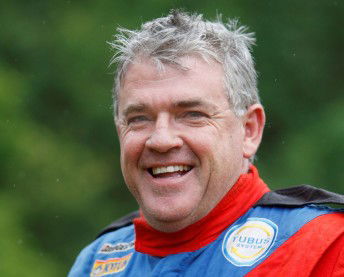

Q: The event may no longer be in North Africa, but the challenge of traversing South America from Argentina to Chile and back certainly lives up to the tradition of the Dakar.
BG: “It’s the biggest, toughest, longest and most dangerous motor sports event in the world. To try and explain it you could say it’s like doing 14 Bathurst 1000s one after the other. However, that still wouldn’t do it justice, as every day we face different terrain and new challenges. Plus the human element of being up at 5am and not crawling into bed at midnight for two weeks really stretches the human element of the race. For the crew last year they had eight all nighters to keep us in the event, so it’s tough for the entire team.”
Q: The TV coverage really captures the adventurous spirit of the event, does it feel like that when you are in the Dakar?
BG: “Like so many tens of millions of people around the world I watch the TV footage in amazement. However, when you are in the event you feel more like you are in an episode of Survivor and then there are days you feel like Indiana Jones!”
Q: There must be times in the Dakar when you feel like it is just never going to end?
BG: “At this year’s event we were only two days into the race and I felt it couldn’t get any tougher and believe me it really got harder. When you are bogged in bulldust in forty degree heat, with other cars then running into you; it you just have to take a teaspoon of cement and toughen up and get on with it!
Q: With the experience of running the event last year, what do you expect?
BG: “Last year we suffered from a poor starting position. It took us around five days to improve up the order to start each day where we really should have been. This is not only important from the point of view of passing others, but also the road conditions are far worse the further down the order you are. This year we have been given a starting position at No.20 and we will enjoy a cleaner run and a three-minute gap to the car in front and behind. Plus the course is actually going in the reverse direction and we will tackle the tough sand dunes early in the event, so we plan to make out big move early.”
Q: Preparation for an event like the Dakar must take months. What has gone into making sure you have everything covered-off this time?
BG: “The actual rally car, plus support vehicle and over five tonnes of spares all left in a forty foot container for Buenos Aeries at the end of October. Overall we have made a lot of minor changes that are more about reliability in the first instance, but we have also worked on improving power. As for myself I have done a lot of bike riding and tennis to get my fitness up to a level that is required for the Dakar. However, I believe my mental toughness is one of my strengths and that is where so many competitors struggle at an event like this.”
Q: With each day being so different, how do you prepare?
Bruce Garland: “Some days are like outback Australia, so we make the most of that. Then we are in the middle of a desert for an entire day taking literally hours to travel 100km in the sand dunes. On those days you just have to really relax and take what comes. It’s about using your skills and experience to get through the tougher days, especially when you find out that everything struggles on days like that.
Q: In terms of importance, a number of the world’s leading automotive manufacturers VW treat this event very seriously with massive budgets and huge entries.
BG: “VW spend US$100 million to win last year’s event, and they are spending the same again this time around. For us we spend the same as their merchandise budget! In saying that we have not only outstanding financial and technical support from Isuzu, but also their blessing for what we do. They also use our efforts in plenty of marketing and publicity for the D-Max Ute all over the world. That is credibility that is earned – you can’t buy it.”


















